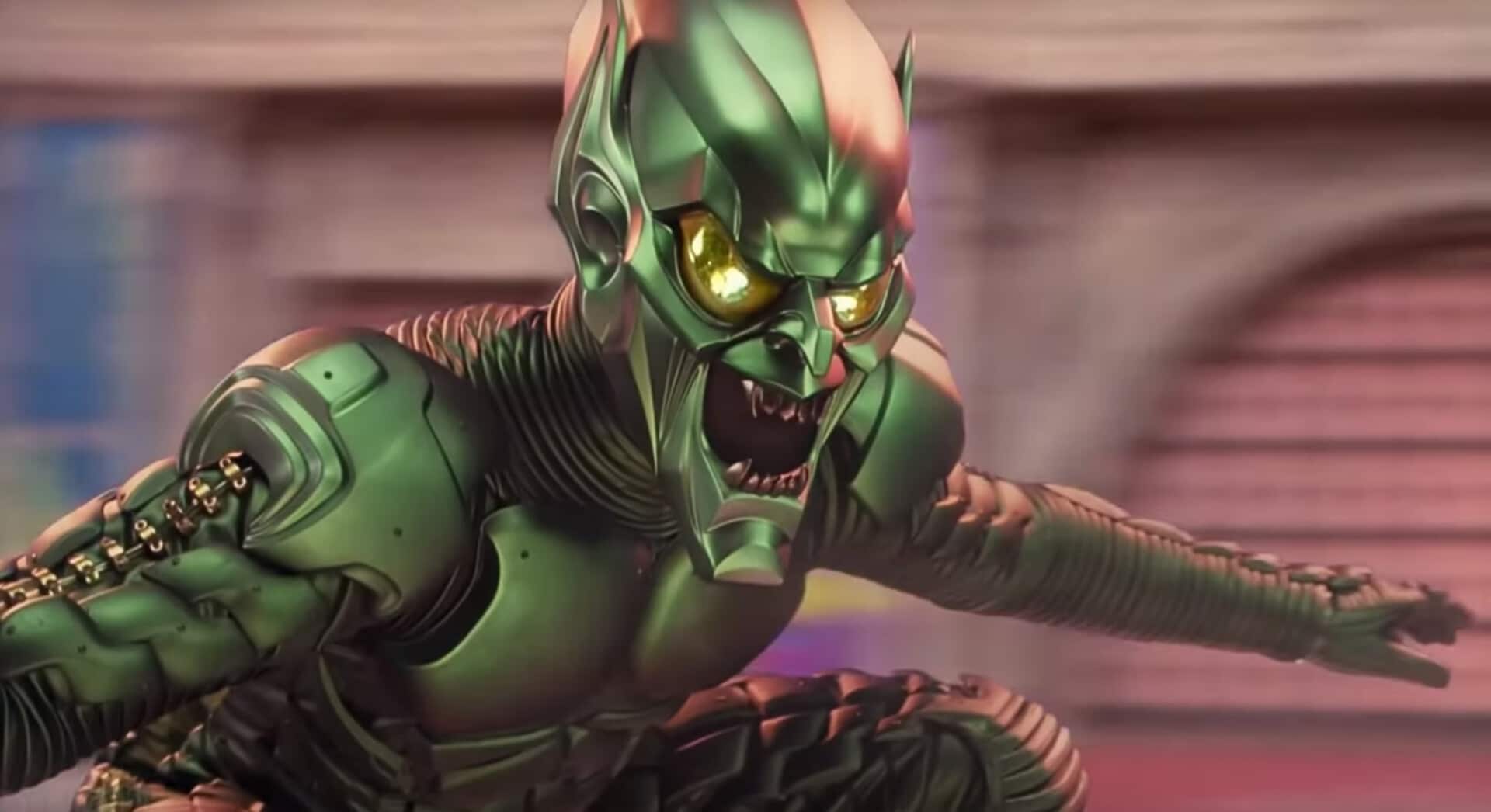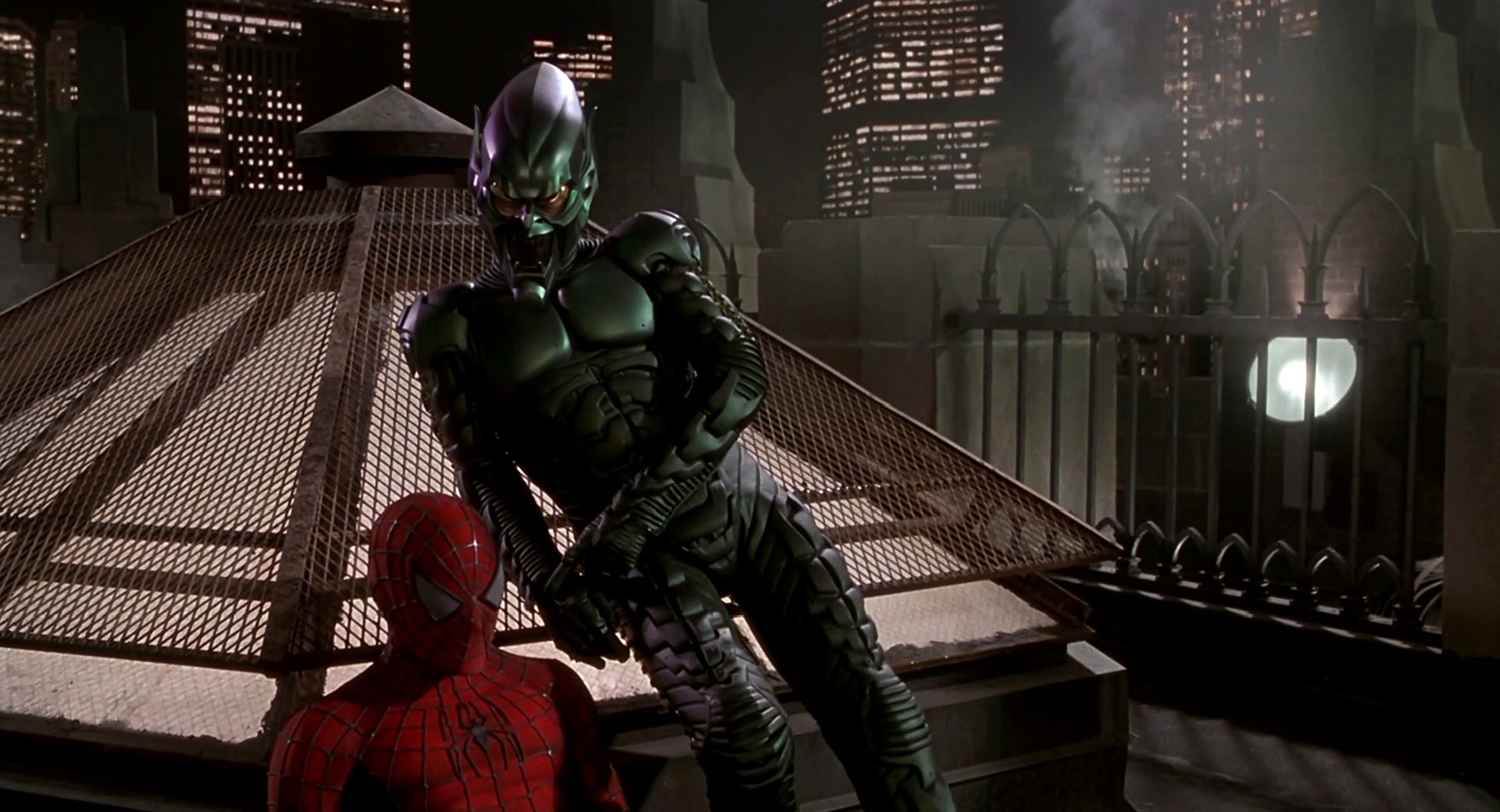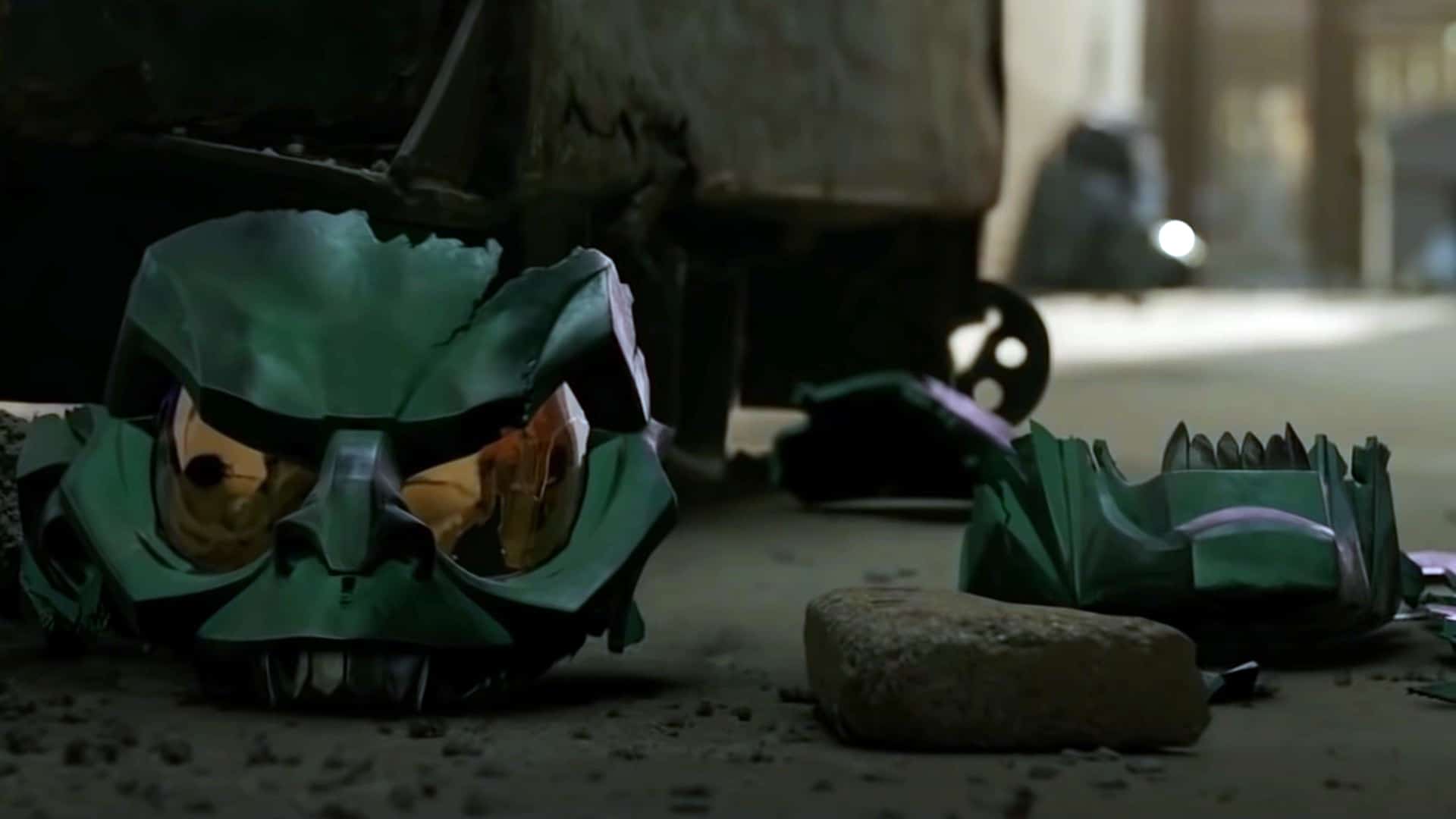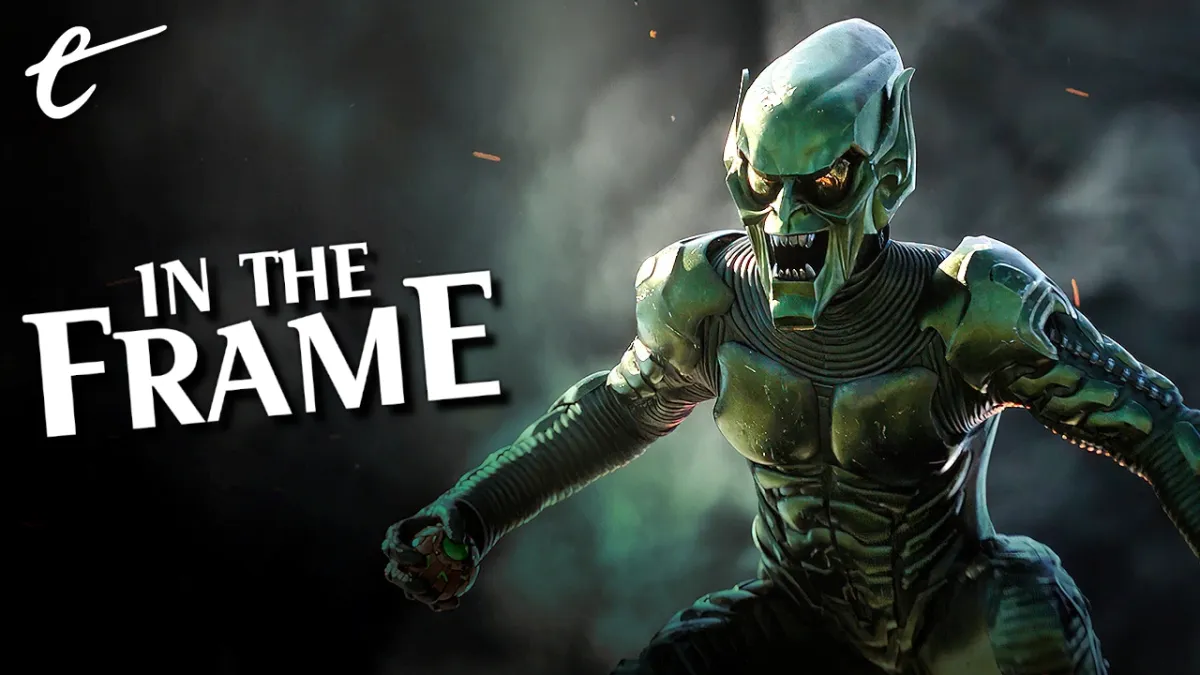This discussion of the Green Goblin and his film performance by Willem Dafoe contains spoilers for Spider-Man: No Way Home.
Spider-Man has one of the best rogues’ galleries in comic books.
This has carried over to the cinematic interpretations of the character. In fact, the villains of Jon Watts’ Spider-Man trilogy are among the best villains in the Marvel Cinematic Universe (MCU). In Homecoming, Adrian Toomes (Michael Keaton) was a compelling portrayal of a certain kind of economic resentment. In Far From Home, Quentin Beck (Jake Gyllenhaal) was effectively a manipulative movie producer trapping Peter Parker (Tom Holland) inside the MCU.
For the latest in the trilogy, No Way Home, the franchise has ported over villains from previous continuities, including the Lizard (Rhys Ifans) from The Amazing Spider-Man, Electro (Jamie Foxx) from The Amazing Spider-Man 2, and the Sandman (Thomas Haden Church) from Spider-Man 3. The film is particularly interested in two of these interdimensional refugees: Dr. Otto Octavius (Alfred Molina) from Spider-Man 2 and Norman Osborn (Willem Dafoe) from the original Spider-Man.
These two characters are among the best comic book movie villains in the genre’s long history. Octavius is a particularly nuanced and sympathetic antagonist, elevated by a superb performance from Molina. He is widely recognized as one of the reasons why Spider-Man 2 works as well as it does. It’s fitting that Molina was heavily frontloaded in the trailers for No Way Home, with so much of the movie’s hype building from his simple delivery of two words: “Hello, Peter.”

However, Willem Dafoe is the stealth MVP of Spider-Man: No Way Home. Part of this is simply down to Dafoe’s unique energy as an actor, whose body of work beautifully straddles the mainstream and the arthouse. Dafoe is the rare actor who seems as comfortable (and as interesting) in The Lighthouse or Antichrist as he does in Aquaman or John Carter. This year alone, he appears in The French Dispatch, The Card Counter, Nightmare Alley, Zack Snyder’s Justice League, and No Way Home. That’s range.
Dafoe is unafraid of a heightened or stylized approach and willing to pitch his performance at whatever level suits the movie around it. Working with director Sam Raimi on the original Spider-Man, Dafoe created a compelling take on Norman Osborn. Part of this came from a willingness to lean unashamedly into the operatics of the superhero genre in a way that turned the character into something of a meme himself. Dafoe’s Osborn is larger than life, as a supervillain should be.
It’s also just a good performance. Osborn is just vulnerable enough to remain sympathetic as he slips into insanity. There’s a balance of ego and desperation to the character that explains things like his decision to test a prototype super soldier serum on himself. There’s a sense of genuine affection in his interactions with his Peter Parker (Tobey Maguire), laced with enough anger simmering beneath the surface about how he feels the world has mistreated him. Dafoe’s physicality is so essential to the character that the actor insisted on doing all the action scenes in No Way Home himself.
No Way Home strips back a lot of the particulars of Osborn’s characterization in the Sam Raimi Spider-Man movies. He smashes the iconic green mask early in the movie. He only makes a few small references to his son, Harry (James Franco). However, No Way Home taps into a lot of what makes this version of the character so interesting, serving as a reminder that Dafoe’s Norman Osborn is one of the most underappreciated villains in comic book movies.

Fundamentally, No Way Home understands why Norman Osborn works as a foil for Peter Parker. One of the big recurring problems with the MCU is the difficulty in defining the villains of these films. There are exceptions, of course, but many of the villains in the MCU are largely interchangeable and forgettable. The superheroes in these films often find themselves facing generic men in business suits and omnicidal nihilists. It’s easy to root against these villains, but it’s not always compelling.
In many cases, the villains in MCU movies are characters who dare to suggest that maybe the heroes shouldn’t operate completely unchecked. In Iron Man 2, Tony Stark (Robert Downey Jr.) faces down Congress. In Thor: The Dark World, Thor (Chris Hemsworth) faces the Dark Elves as they try to avenge a genocide orchestrated by Thor’s grandfather Bor (Tony Curran). The villain in Captain America: Civil War is Helmut Zemo (Daniel Brühl), who thinks maybe superheroes shouldn’t act unilaterally.
In these cases, the villains seem like killjoys for daring to suggest that maybe there should be limits on what superheroes get to do with all of their power. The assumption is that audiences will root for the freedom of these heroes to do whatever they want. This is what makes Norman Osborn such a fascinating counterpoint to the stereotypical MCU villains. Osborn arguably has more in common with the Avengers than he does with any of the franchise’s major antagonists.
Like many members of the Avengers, Osborn is a product of the military-industrial complex. Like Tony Stark, he is a super-wealthy industrialist who creates ingenious weapons technology and armor. Like Bruce Banner (Edward Norton / Mark Ruffalo), he is a character colored in shades of green and purple who manifests an alternate personality by experimenting on himself. Like Steve Rogers (Chris Evans), he is granted incredible abilities by a “human performance enhancer” serum.

More to the point, Osborn is defined by a sense of arrogance and superiority. He believes that power gives him authority to enforce his will upon the world. “There are eight million people in this city,” the Green Goblin tells his foe during a rooftop conversation in Sam Raimi’s Spider-Man. “And those teeming masses exist for the sole purpose of lifting the few exceptional people onto their shoulders. You, me… we’re exceptional.” It’s a very cold worldview: Might makes right.
The Green Goblin is an unchecked power fantasy. It’s not that big a leap to get from Norman Osborn’s self-pitying rant about “how much (he’s) sacrificed” in Spider-Man to the trite reassurances that the people terrorized by Wanda Maximoff (Elizabeth Olsen) in WandaVision “will never know what [she] sacrificed for them.” Whispering in Norman’s head, the Green Goblin teases that it is giving Norman “what (he) always wanted: power beyond (his) wildest dreams.”
This establishes Norman Osborn as a counterpoint to Peter Parker. Much of the concept of Spider-Man is built around the idea that “with great power there must also come — great responsibility!” The Green Goblin is a cautionary tale about taking too much power with too little responsibility. Unlike so many MCU villains, the Green Goblin isn’t threatening to diminish Peter’s power. If anything, he represents the threat of what might happen if Peter embraces his power uncritically.
This carries over to Spider-Man: No Way Home. Much of Peter Parker’s arc in No Way Home is effectively a retread of the character’s origin story. Peter learns that abusing his superhero connections to satisfy his own desires can have dire consequences and that he needs to take responsibility for his own actions. Aunt May (Marisa Tomei) dies, but not before teaching Peter that important life lesson that is essential to every proper Spider-Man origin story.

No Way Home folds Norman Osborn into this story. It is Norman Osborn who kills Aunt May after the Green Goblin refuses to surrender his power to Peter Parker. Once again, Norman Osborn represents the seductive lure of power without either responsibility or consequence. “Peter, you’re struggling to have everything you want,” Osborn taunts his young opponent, “while the world tries to make you choose.” Osborn is the film’s big bad, the last villain to face down Peter.
In some ways, the Green Goblin is a literal manifestation of Peter’s selfishness, a force summoned across the multiverse as part of a greater cosmic balance to serve as the embodiment of Peter’s abuse of his power. He’s almost the devil on Peter’s shoulder. No Way Home quickly eschews the idea of conversations between Osborn and the Goblin, once Osborn shatters the mask. Instead, the Goblin talks to Peter the same way that it used to talk to Osborn: goading and tempting the hero.
The Green Goblin is a character who refuses to choose or sacrifice. He will not surrender his power, but he also won’t return to his home dimension to face the consequences of his actions. No Way Home understands that this struggle “to have everything” is exactly what makes Osborn a villain and what poses him in stark contrast to Spider-Man. Peter’s arc in No Way Home ends with the character accepting the consequences of his actions and erasing himself from the narrative.
There’s a lot going on in No Way Home, and it’s impressive that the movie works at all. It is the character of Norman Osborn, and the performance of Willem Dafoe, that serves as the glue that holds a lot of the movie’s big ideas together. No Way Home understands how to use the character in ways that fit neatly with the themes of Sam Raimi’s original Spider-Man. Given the size and stature of the cast of Spider-Man: No Way Home, the character’s greatest crime might be stealing the movie.






Published: Dec 20, 2021 11:00 am